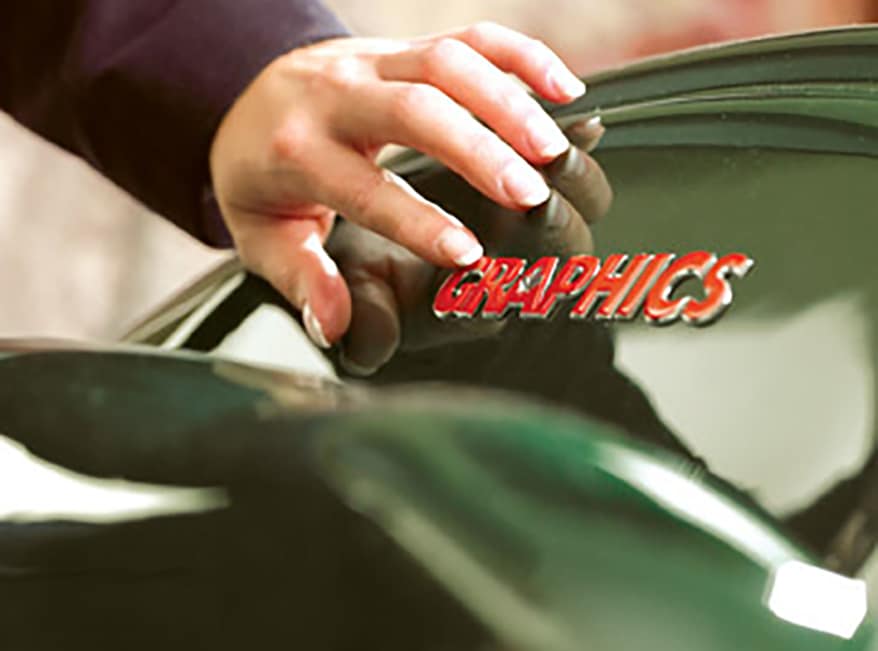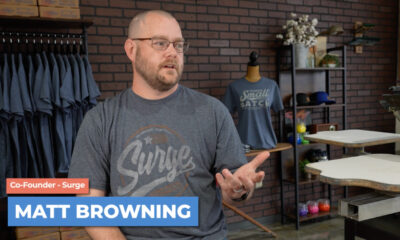Expert Perspectives
Screen Printers Must Escape the “Commodity Trap”
It’s the threat that every shop faces in the fight to keep clients.
Published
7 years agoon

IT HAPPENS TO every business, in a cycle that’s taking place more rapidly now than ever before. I’m talking about being commoditized, when buyers lump your company in with every other player or poser in your market. Customers don’t know any different, and that’s the problem. It’s a trap, but fortunately, it’s one that you can escape.
It happens to every business, in a cycle that’s taking place more rapidly now than ever before. I’m talking about being commoditized, when buyers lump your company in with every other player or poser in your market. Customers don’t know any different, and that’s the problem. It’s a trap, but fortunately, it’s one that you can escape.
Why Do Things Become Commodities?
Here is one dictionary definition of a commodity: “A good or service whose wide availability typically leads to smaller profit margins and diminishes the importance of factors (such as brand name) other than price.”
But this doesn’t tell the whole story. It does not mention that in a commoditized market, the customers set the price they are willing to pay. The sad truth is customers don’t see the value of what we do. They do not feel they have a compelling reason to pay one source more than another. From their point of view, every provider is interchangeable, so the decision comes down to which is cheapest.
How did we get here? There were two causes: information and access. Everyone can get information easily via the internet, with global access to providers that appear to be cheaper. The power of Google has dramatically accelerated commoditization, but it’s a natural process and it’s not a new phenomenon.
Here is a bit of historical perspective from our industry. Printing started off as a trade. Craftsmen were trained in the secrets of the craft through apprenticeships. It took years to become a journeyman. As the only provider in town, you controlled the price. Most work was customized, not mass-produced.
AdvertisementSooner or later, a trained journeyman would leave his employer and move to another town. This is how the freemasons started, too. If you were a stone mason, you could travel freely and find work by showing you knew the secret signs and then demonstrating your skills. You got the job interview and, ultimately, the work.
If you landed in a town where someone wasn’t already established, you became the town blacksmith or mason or carpenter. Eventually, you also hired apprentices, and the cycle repeated.
Competition was not a problem because people did not travel and they had a low level of literacy. Trade was confined to the village or town. But then towns grew into cities and people started to travel. Transportation and roads brought goods and services to new markets. Customers became aware that there were other sources for goods and services.
As commerce and competition grew and the Industrial Revolution picked up steam, craftsmanship met automation. Technology spread as the railroads connected far-flung locales. Now there were cheap alternatives to local craftsmen and a lot of competition. But there was also confusion because the quality varied widely.
This led to standards, which temporarily differentiated between providers of machine-produced goods. If your product was manufactured according to the standard, you had some degree of assurance, but it didn’t last long. As soon as enough automated providers met the standard, the differentiation was gone.
AdvertisementOnce standards were widely met, the only remaining distinction was price. As a result, production began moving to locations where goods could be made more cheaply. This has been going on for a long time, but has peaked in the last decade. China became the big, low-cost producer, but now their standard of living has increased. Just as it did years before in the UK and the US, industrialization led to the creation of a middle class.
It’s a cycle that repeats itself across all industries, and it’s happening everywhere, but businesses aren’t responding to it proactively. They are passive in that they are aware of increasing competition and price sensitivity, but their only action is to complain about how bad things have gotten. They are reactive in that their next move is usually to match the lower price or conduct negative public relations aimed at the low-cost competition. Neither approach serves them well.
Once a market has been commoditized, vendor loyalty disappears. As long as the buyers can get whatever they want easily, quickly, and at a quality and price they are happy with, there is little basis for loyalty.
This leaves suppliers in a frustrating spot. The constant focus on low price strips profit to the point where there is little incentive to invest in developing the business. Eventually, service and reliability are compromised. And the customers don’t care that the supplier is having a hard time: They’ll just go to the next one that promises to deliver.
The Innovation Cycle
Every idea, innovation, technology, language, and society that reaches implementation goes through four cycles that help drive commoditization:
- Innovation
- Invention extension
- Functional substitution
- Demise
Printing, specifically moveable type, was the innovation that allowed for the mass duplication and spread of ideas, increasing awareness of the printing processes. Until this point, there were examples of printing, including precursors to screen printing, but they were not commercialized extensively.
AdvertisementScreen printing was a functional substitution to the letterpress printing process. It increased the number and size of substrates that could be easily printed, and added new capabilities, like greatly improved exterior durability. Screen printing did not gain traction until the early 1900s and was used largely for signage, as well as some textile applications.
Later, screen printing underwent multiple invention extensions of its own that extended the capabilities of the process. Examples include knife-cut stencils, photographic stencils, direct emulsions, metal frames, retensionable frames, high-modulus meshes, flash curing, UV inks, water-based inks, and many more. These extensions are still happening to a degree, especially in the industrial/non-graphic sectors.
Functional substitution is when a new or competing process or technology is introduced that renders the original innovation obsolete or no longer economically viable. For screen printing, technology substitution is represented by digital printing, 3D printing, electro-toner, and other new technologies that deliver the same characteristics as the original process, but in a different way.
In the case of digital printing, the advantage is the elimination of prepress steps related to screen making and machine setup. The economic run length is one piece. Likewise, variable-data technology enabled digital printing to create mass-personalized goods.
The final phase of the innovation cycle is demise – the point at which the original innovation is no longer needed. If digital printing presses become so inexpensive that they challenge the low barrier to entry or per-unit run cost typical of screen printing, the game would end.
Differentiation
Another path to differentiation that seldom provides a lasting benefit is to find some way to extend a process during the later stages of the innovation cycle. Examples for us include printing bigger, wider, faster, in more colors, on more substrates, at higher resolution, with finer halftones, and so on. These are process-oriented extensions, and it’s logical for printers to focus their attention here because they know and love the technology.
The problem is that process-oriented extensions seldom become deciding factors for the customer, because every competitor is doing the same things. In order to differentiate, you have to be different. This means looking beyond the obvious.
All this became clear to me when I started studying behavioral economics – the branch of psychology that looks at how we make decisions. Like most people, I assumed it was through logic. In reality, we all make decisions at the emotional level and then justify them at the logical level.
For those familiar with the neuroscience, the emotional level is called the limbic system, comprising several different parts of our brains. Language isn’t part of the limbic system – it communicates with feelings. So when you follow your “gut feeling” or get a sense that something just isn’t right, that is your limbic system communicating.
We take those emotional responses and verbalize them through our neocortex. This is the new (neo) part of our brain, evolutionarily speaking, and it has the logic and language capability that makes us human.
It turns out that customers are looking for a lot more than the lowest price. They really want the best value for the money they spend. “Value” is simply a term we use to equate the transfer of money for goods or services, and it’s a relative comparison. People will spend more money for greater value – it’s just a matter of negotiating what that price will be.
Let’s say I have a car I want to sell, and you are interested in buying it. We haggle back and forth until you say you can’t spend more than $20,000. Just then, you find a listing for another car – a 1-year-old S Class Mercedes with 8000 miles on it that belonged to a woman whose husband just took off with his secretary. She’s only asking $25,000 for the car, partly to punish her husband. I can guarantee you will find the extra $5000, because the deal has $50,000 of value above the other car you were considering.
So how do you create such a perceived difference in value with your customers? First, recognize that they are not buying printing; they are buying the result of what the printing delivers. If you can extend the functionality of your offer to give them more of what they’re really buying, then you’re adding real value. You will arrive at the correct answer when you ask the client: “Why is this important to you?”
Think about the local event promoter who orders T-shirts from you. Most printers won’t think much more about the transaction, but it goes much deeper. The real reason they want those shirts is to commemorate the event, and their real objective is to create a connection between the attendee and the event. They want their guests to relive the experience every time they put the shirt on. What would the value of an original Woodstock concert T-shirt be, if you could find one?
When the emotional connection is elevated, it becomes a whole new game. Now you have opportunities to look at the graphic design and aesthetics, or upgrade them to a garment that will last for years. When you achieve this kind of emotional connection with your customer, price plays a greatly diminished role.
The Path to Uniqueness
So how do you put these ideas to work? Begin by looking at your business from the eyes of the client. Try and get inside their head. What do they want? What do they really, really want?
Think about what they are trying to achieve. It’s not about ink on substrate; it’s about communicating an experience. It could be branding, or exclusivity, or association with a group or event. There are so many opportunities to take each of those objectives farther than the shirt you are printing. The graphic application is just a small part of the package.
Beyond the emotional connection, another way to differentiate your company is through time. Everyone is “time bankrupt” these days. We are all busy with too much on our plates. Anything you can do to streamline your process and save your client time adds value. As someone once told me:
“Poor people spend time to save money; wealthy people invest money to save time.”
What can you do to save your clients time? Maybe add easy-to-use comparison charts and cost worksheets on your website, or a client interface that lets them quickly place and check orders without having to call. Offer a concierge service where you expedite the job with a higher degree of involvement and faster turnaround time. Perhaps you can do something unique with delivery or merchandising.
Even if you are in the commercial/industrial sector selling strictly B2B, the rules still apply. The twist is, you are working with purchasing agents or buyers who are not personally invested in the emotional outcome. So focus on ways to reduce the time, improve the financial terms, or cut the total cost of the transaction. Get creative; there are always ways to separate your business from the pack.
Another excellent approach is to focus on financial terms. Offer a deeper discount for cash with the order, perhaps, or a longer time to pay. Think of ways to lower their risk by improving your performance guarantee. When you know what the client is worried about, you can add value by addressing those concerns.
I had a good friend whose company was selling to Wal-Mart, and it was cutthroat business. They were always worried about being undercut. Eventually, they realized that Wal-Mart did not care what they paid for the product – they really only cared about how much income per square foot they produced. It came down to turnover time and sell-through. They wanted to never run out of a product while buying only how much they would sell.
The solution came through learning to optimize their purchasing process by understanding the data. This was before the days of big data, so it took a lot more work involving huge weekly data dumps into Excel spreadsheets and late nights of analysis. Ultimately, they were able to figure out what each store should buy for the week.
They changed their packaging method and packed orders for each store, saving time at the client’s distribution centers. They started looking at other factors like weather, temperature, where holidays fell in the week, and a whole bunch of other seemingly unrelated factors. They got so good at the predictive analysis that Wal-Mart granted them an exceedingly rare privilege – to be one of only 185 of their then-6300 vendors who would tell Wal-Mart how much to buy and at what price.
Eventually, Wal-Mart started sharing the sales data of their competitors to see if my friend could do better, and he always did. Of course, the company used this incredible competitive insight to outsell rivals in all the other markets where they competed.
And by the way, they were selling sunglasses made in China. The differentiation had nothing to do with the product.
Pulling It All Together
Everything in our lives eventually becomes a commodity, but you have options for how to deal with it. You can simply extend your offering, as Baskin Robbins did by offering 31 flavors, but this only works in the short term. Giving too many choices can actually slow a business down because the customer can’t make up their mind. At best, it’s only a temporary solution until the competition catches up and does the same thing.
The long-term solution is to stop thinking that you know what is best for the client. Perhaps you do, but when you assume that you know something, you close the door to awareness and lose the opportunity to see a new perspective. Instead, let the client tell you what they really want.
Get in their heads. Elevate the real reason to make the purchase with you. Appeal to emotions like trust, love, and happy memories. Try and create the ultimate, personal experience for them. Make them so delighted with the experience they can’t wait to tell their friends and order with you again. Strive to become the Disneyland or Cirque du Soleil of your specialty.
Read more from Mark Coudray or check our the rest of our February/March 2017 “Special Garment” issue.
Mark A. Coudray is an industry pioneer with 47 years of technical expertise and leadership. He is a multiple Swormstedt Award winner in both technology and business, is a member of the Academy of Screen and Digital Printing Technology, and is a Certified StoryBrand Guide.

SPONSORED VIDEO
Let’s Talk About It
Creating a More Diverse and Inclusive Screen Printing Industry
LET’S TALK About It: Part 3 discusses how four screen printers have employed people with disabilities, why you should consider doing the same, the resources that are available, and more. Watch the live webinar, held August 16, moderated by Adrienne Palmer, editor-in-chief, Screen Printing magazine, with panelists Ali Banholzer, Amber Massey, Ryan Moor, and Jed Seifert. The multi-part series is hosted exclusively by ROQ.US and U.N.I.T.E Together. Let’s Talk About It: Part 1 focused on Black, female screen printers and can be watched here; Part 2 focused on the LGBTQ+ community and can be watched here.
You may like
Advertisement

Inkcups Announces New CEO and Leadership Restructure

Hope Harbor to Receive Donation from BlueCotton’s 2024 Mary Ruth King Award Recipient

Livin’ the High Life
SUBSCRIBE

Bulletins
Get the most important news and business ideas from Screen Printing magazine's news bulletin.
Advertisement
Latest Feeds
Advertisement
Most Popular
-

 Art, Ad, or Alchemy1 month ago
Art, Ad, or Alchemy1 month agoF&I Printing Is Everywhere!
-

 Case Studies1 month ago
Case Studies1 month agoHigh-Density Inks Help Specialty Printing Take Center Stage
-

 Andy MacDougall1 month ago
Andy MacDougall1 month agoFunctional and Industrial Printing is EVERYWHERE!
-

 Columns2 weeks ago
Columns2 weeks ago8 Marketing Mistakes Not to Make When Promoting Your Screen Printing Services Online
-

 Editor's Note2 weeks ago
Editor's Note2 weeks agoLivin’ the High Life
-

 Thomas Trimingham2 months ago
Thomas Trimingham2 months ago“Magic” Marketing for Screen Printing Shops
-

 Marshall Atkinson2 weeks ago
Marshall Atkinson2 weeks agoHow to Create a Winning Culture in Your Screen-Printing Business
-

 News & Trends1 month ago
News & Trends1 month agoWhat Are ZALPHAS and How Can You Serve Them in Your Print Business?











